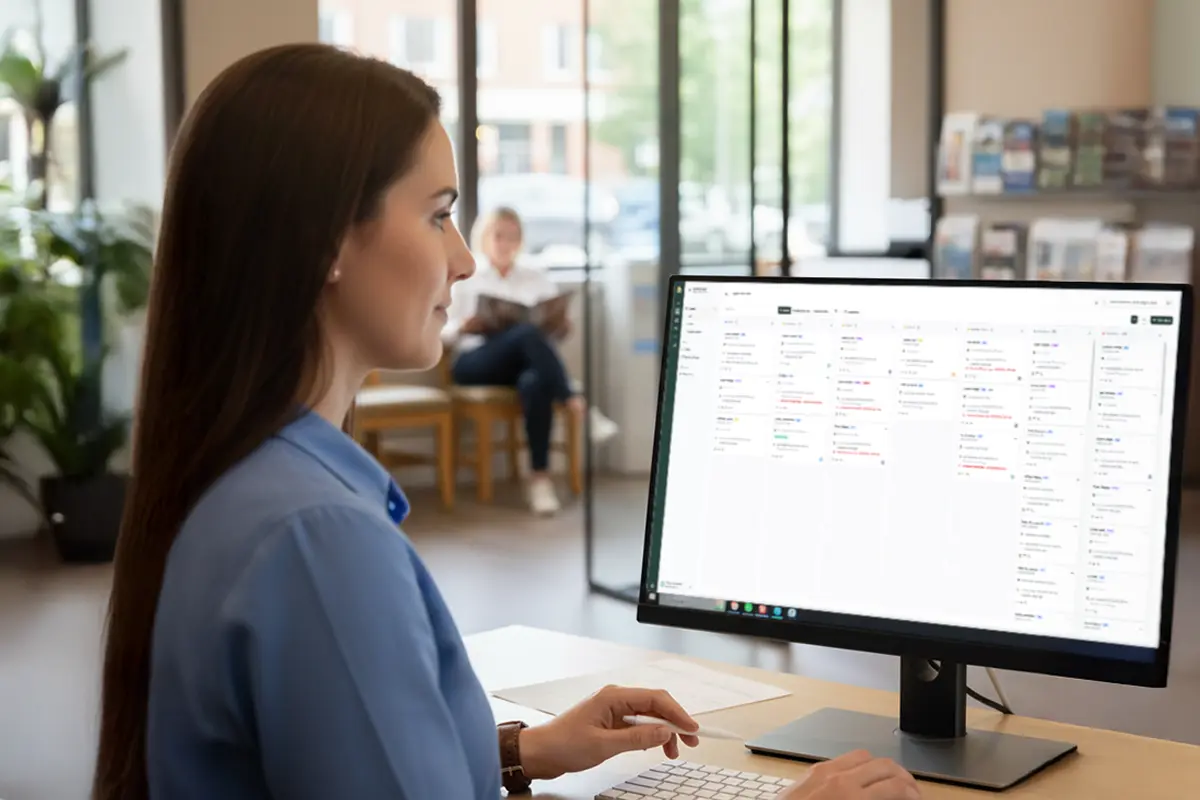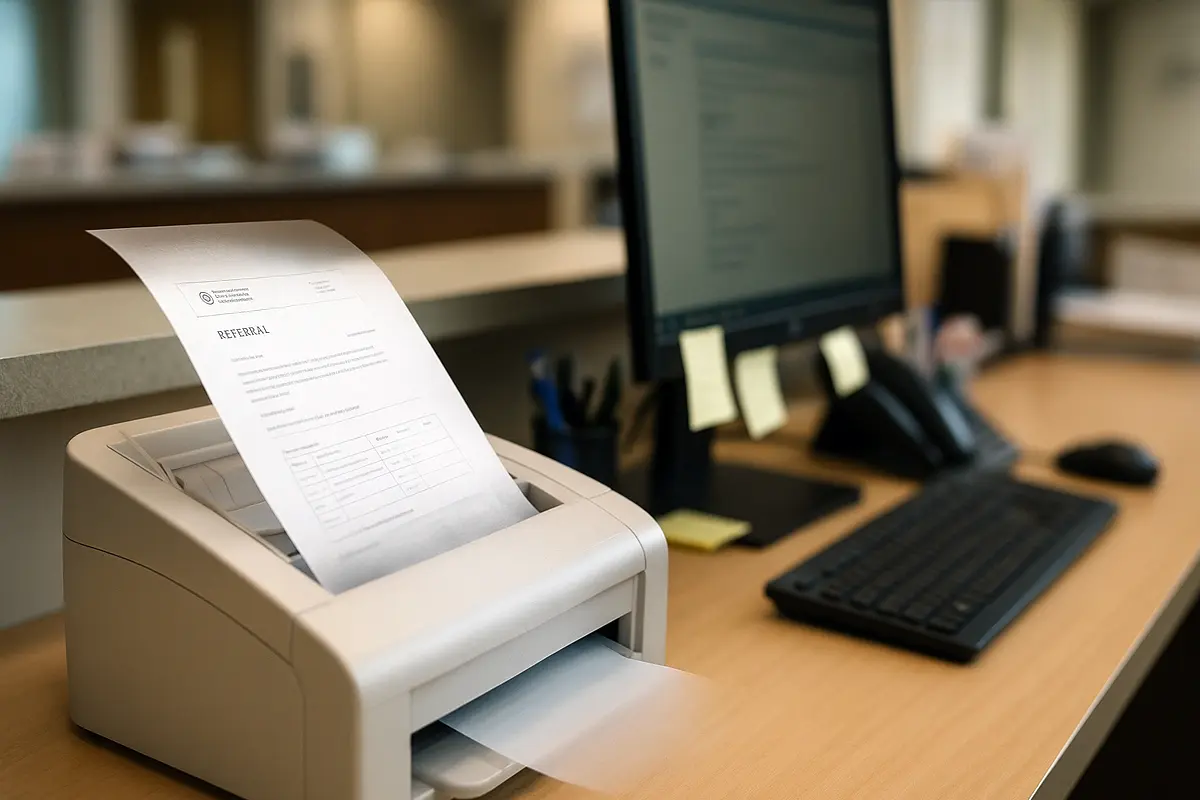
Patient No-Shows Are Killing Your PT Practice: Here's How to Fix It
Four empty appointment slots by noon. $420 in lost revenue before lunch. And this is just Tuesday.
While other medical practices deal with 5-7% no-show rates, PT practices face a completely different reality. We're talking about 73% of patients missing at least one appointment during their treatment course. That's not a scheduling hiccup—that's a systematic problem that can bleed your practice dry if left unchecked.
Here's the brutal truth: patient no-shows aren't just an inconvenience—they're systematically undermining your practice's financial health and your ability to help people recover.
The Hidden Financial Damage
Let's talk numbers for a minute, because the math on this is sobering. PT practices can lose up to $252,000+ annually depending on their size and how poorly they manage no-shows. That's not a typo.
Here's how it breaks down:
Small practices (50-100 monthly visits) lose $8,820-$18,900 annually at just a 15% no-show rate. Medium practices (200-300 monthly visits) are looking at $37,800-$56,700 in lost revenue each year. Large practices with 500+ monthly visits? They can lose $94,500 or more.
But the real damage goes deeper than missed appointments. When a patient no-shows, you're still paying your therapist's salary, you're still covering rent and equipment costs, and you're dealing with the administrative headache of rescheduling.
The cash flow impact is particularly brutal for PT practices. Unlike a specialist who may see a patient once and then bill insurance, we need consistent attendance across 6-12 sessions within tight authorization windows. Miss those sessions? You can't just make them up later—the insurance window may close, and that revenue is gone forever.
Why PT Practices Get Hit Harder
Physical therapy faces unique challenges that make no-shows a bigger problem for us than for other healthcare providers. It's not just about the multi-visit requirement (though that's a big part of it).
The communication gap is real. Research shows PT practitioners often focus on biomedical facts rather than patient concerns, with patients interrupted after only 12-23 seconds during examinations. When patients don't feel heard or understood, they're more likely to simply stop showing up.
Financial barriers compound with every visit. A cardiologist might charge one $40 copay for a consultation. We're asking patients for $20-60 copays multiple times per week for weeks on end. Medicaid patients show significantly higher no-show rates, and high-deductible plans create even more barriers when patients face the full cost until they hit deductibles that can reach beyond $8,000 in some cases.
The motivation challenge is unique to rehab. Less active patients are significantly less likely to attend PT sessions, and we're asking them to actively participate in their recovery—not just passively receive treatment. When progress feels slow or exercises are uncomfortable, it's easier to skip that appointment than push through.
Transportation becomes a multiplied burden when patients need to make 2-3 trips per week. Rural patients travel an average of 17.8 miles compared to 8.1 miles for urban residents, and that distance adds up fast over a treatment course.
The Solutions That Work
The good news? Practices that tackle no-shows systematically see dramatic improvements. We're talking about up to a 71% reduction in no-show rates when you implement the right combination of strategies.
Automated Reminders (But Make Them Smart)
Basic appointment reminders are table stakes now, but smart reminders are game-changers. SMS text reminders achieve 30-50% no-show reduction across healthcare settings, with text messages hitting 98% open rates compared to 50% phone answer rates.
The key is making them contextual and helpful, not just transactional. Instead of "You have an appointment tomorrow," try "We’re excited to see you tomorrow at 2pm. Remember to bring comfortable clothing and your exercise band. Please call if you need to reschedule."
Set up sequences that adapt based on patient behavior. First-time patients get different messages than established patients. Patients who've missed appointments before get additional motivational content and easier rescheduling options.
Flexible Scheduling That Fits Lives
79% of patients prefer online booking capabilities, but most PT practices still operate like it's 1995. Online self-scheduling isn't just convenient—it's proven to increase appointment requests by 20% with 90% conversion rates.
But here's what most practices miss: true flexibility means offering early morning, lunch-hour, and evening slots. 63% of patients say 60-minute sessions create access challenges, so consider shorter, more frequent sessions when appropriate.
Same-day booking and waitlist management turn cancellations into opportunities. When someone cancels at the last minute, automated systems can immediately notify waitlisted patients and fill that slot within hours.
Address the Engagement Problem Head-On
Non-adherence for general MSK home exercise plans can be as high as 65%, and poor engagement between visits directly correlates with appointment no-shows. When patients don't see progress, they stop coming.
Thoughtful exercise programs (or home exercise programs) keep patients engaged between visits. Tools like these can deliver 15% reduction in patient dropout through better adherence tracking.
When appropriate, you can also send progress updates that celebrate small wins. These touchpoints reinforce the value of continuing treatment.
Build Financial Transparency and Flexibility
Financial surprises kill attendance. Be upfront about costs, offer payment plans, and consider subscription models that spread costs more predictably. Cash-pay programs and subscription models eliminate insurance uncertainties and create stronger patient commitment.
For insurance-based patients, verify benefits before the first visit and explain what they'll owe. Set up automated payment processing to reduce friction, and offer payment plan options for larger balances.
Create a Comprehensive Communication Strategy
Go beyond appointment reminders to build genuine patient relationships. Send educational content relevant to their condition, check in after missed appointments with curiosity rather than frustration, and provide multiple ways for patients to communicate with your team.
"We missed you yesterday—is everything okay?" opens doors for honest conversations about barriers to care. Often, a simple scheduling adjustment or payment plan discussion gets patients back on track.
The Technology That Ties It All Together
Individual tactics help, but comprehensive platforms deliver the biggest impact. Integrated EMR systems designed specifically for PT practices combine appointment request and lead workflows, automated reminders, exercise programs, and patient engagement tools into coordinated systems.
Second Door Health's platform addresses no-shows through multiple integrated touchpoints:
- Automated reminder sequences that adapt based on patient type, appointment history, and engagement level
- Flexible online scheduling that shows real availability and enables easy scheduling (and centralized management of those requests)
- Patient engagement tools that keep people connected to their treatment between visits
- Cash pay subscription models that reduce financial barriers and create stronger commitment
- Integrated communication systems that make it easy for patients to stay in touch
The beauty of integrated platforms is that they address multiple root causes simultaneously. When your scheduling, communications, payments, and patient engagement all work together with your EMR, the cumulative impact far exceeds individual point solutions.
The ROI Makes This a No-Brainer
Technology investments typically pay for themselves within 6-12 months. Automated reminder systems can recover 2-5% of missed appointments. For a practice with 300 monthly visits, a 5% improvement recovers 15 additional visits worth $1,575 monthly—easily exceeding system costs.
When you factor in staff efficiency gains (practices report 20+ hours monthly administrative time savings), the ROI becomes even more compelling.
But the real value isn't just financial—it's about being able to help more people recover and building a practice that's sustainable for the long term.
Making It Happen in Your Practice
The key to success is starting with fundamentals before getting fancy. Begin with the highest-impact, lowest-cost interventions: automated SMS reminders and online scheduling. These foundational changes typically deliver 20-30% improvement in no-show rates within 90 days—giving you quick wins that build momentum for bigger changes.
But you can't improve what you don't measure. Before implementing any solutions, track your baseline metrics religiously. You need to know your current no-show rates by appointment type, patient demographics, and time of day. This data becomes crucial for measuring improvement and identifying patterns that guide your strategy.
As you roll out new systems, remember that technology is only as good as the experience it creates. The best reminder systems in the world won't help if patients don't understand their treatment plan or feel disconnected from their care team. Focus on using technology to strengthen relationships, not replace them.
When you're ready to scale, resist the temptation to cobble together multiple point solutions. The administrative burden of managing separate systems for scheduling, reminders, payments, and patient engagement often negates the benefits of individual tools. Comprehensive platforms that integrate these functions deliver better results with less operational complexity.
Finally, invest in your team alongside your technology. Train your staff on new processes and give them the tools to have productive conversations with patients about barriers to attendance. Your front desk team becomes your first line of defense against no-shows when they're equipped to problem-solve with patients rather than just process appointments.
The Bottom Line
No-shows don't have to be an accepted cost of doing business in physical therapy. The practices that treat them as a systematic problem requiring systematic solutions see dramatic improvements in both financial performance and patient outcomes.
The technology exists, the evidence is clear, and the ROI is compelling. The question isn't whether you can afford to implement comprehensive no-show reduction strategies—it's whether you can afford not to.
Your patients want to succeed in their recovery, and your practice deserves to thrive. With the right systems in place, both goals become not just possible, but inevitable.





